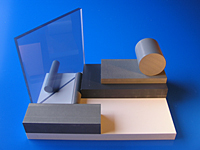
1029 Pulinski Rd Ivyland,
PA 18974
Tel:215-672-5225
Fax:215-672-5582
Email: sales@tridentplastics.com
Website: www.tridentplastics.com
PA 18974
Tel:215-672-5225
Fax:215-672-5582
Email: sales@tridentplastics.com
Website: www.tridentplastics.com


Item # |
Item Name |
Weight |
Specific Gravity |
Rockwell Hardness |
Water Absorption |
Tensile Strength |
Quantity |
|---|---|---|---|---|---|---|---|
| 2193-3900 | N/A CPVC - "High Temperature" Rod | N/A 14.300 lb/ft | N/A 1.55 gm/cc | N/A R119 | N/A 0.03 % | N/A 8000 psi | |
| 2193-4000 | N/A CPVC - "High Temperature" Rod | N/A 17.100 lb/ft | N/A 1.55 gm/cc | N/A R119 | N/A 0.03 % | N/A 8000 psi |